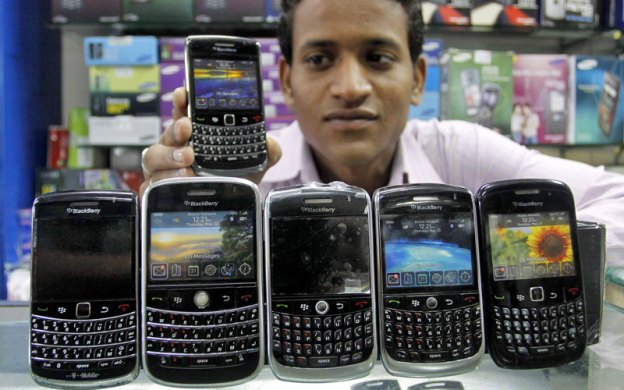
Apple’s iPhone may be the most popular line of handsets in the US, but the iconic smartphone isn’t the winner everywhere. In India, where more than 600 million people have cell phone service, Apple sells fewer devices than either Nokia or BlackBerry-maker Research In Motion, reports Bloomberg. In fact, RIM’s market share is expected to grow nearly 70 percent a year in India until 2015.
The reason is apparently because the wireless infrastructure in India cannot yet support the iPhone on a large scale, as well as the prohibitively high cost of the iPhone.
“The iPhone only really works when you have Wi-Fi ,” says Kshma Shah, a Mumbai resident who spoke with Bloomberg. “3G has barely started in India, and on 2G you just can’t have the same experience.”
Another reason for RIM’s success in India is because of the popularity of BlackBerry Messenger, a closed messaging services that only works between BlackBerry devices. Because BBM works well over slower network speeds, and because the service is used by a wide number of users, BlackBerrys have been able to retain their sought-after status.
Worldwide, RIM has seen its business dwindle beneath the growing weight of the iPhone and a swath of handsets based on Google’s Android operating system. But RIM’s success in India has helped make up for its losses elsewhere in the world, and the company is preparing to capitalize off of its popularity in India by expanding distribution to 80 cities, up from 15 last year.
“We want to ride this wave,” said Krishnadeep Baruah, RIM’s director of marketing in India. “This is really the time to expand into the emerging towns and cities.”
Apple, on the other hand, has reportedly made only a meager attempt to grow its business in India. At least part of this is likely due to the fact that the price of Apple’s devices sit well outside the grasp of most Indians, 900 million of whom are estimated to live on less than $2 per day. The least expensive iPhone 4 in India costs about $705.
Editors' Recommendations
- Best refurbished iPhone deals: Get an iPhone 14 for $513
- Best iPhone deals: Save on iPhone 15, iPhone 15 Pro Max and more
- How to find your lost phone (tips for iPhone and Android)
- Why you should buy the iPhone 15 Pro instead of the iPhone 15 Pro Max
- iPhone SE 4: news, rumored price, release date, and more


